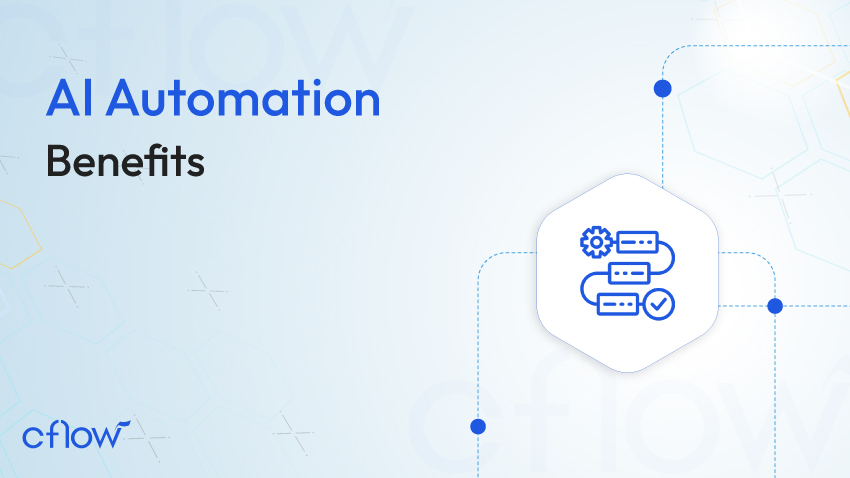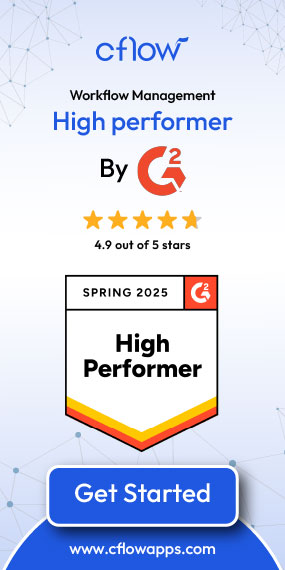The Future of Work: AI Automation Benefits and Challenges

We’re entering an era where machines don’t just support human work but transform it. Artificial Intelligence and automation technologies are revolutionizing the workplace by redefining roles, workflows, and even entire industries. From automating back-office tasks to predicting customer behavior, AI is fast becoming a core enabler of modern business operations.
While the potential of AI in the workplace is immense, its implementation requires careful navigation of challenges, including ethical dilemmas, workforce adaptation, and digital infrastructure upgrades. Understanding both the benefits and the complexities of AI automation is key to preparing for the future of work.
Table of Contents
The Rise of AI Automation in the Workplace
AI automation involves using intelligent systems to perform tasks that once required human judgment or manual effort. These systems span a wide spectrum – from robotic process automation (RPA) in finance and procurement, to computer vision in manufacturing, natural language processing (NLP) in legal documentation, AI tutors in education, and predictive analytics in marketing and healthcare.
These technologies are already embedded in everyday tools: spam filters in email, virtual assistants like Siri and Alexa, AI-powered grammar checkers, and automated report generators. In enterprise environments, AI enhances workflows across:
Supply chain and logistics, by forecasting demand and optimizing delivery routes.
Human resources by streamline recruitment, onboarding, and employee sentiment analysis.
IT operations, through anomaly detection and predictive maintenance of infrastructure.
Legal departments, using AI to review contracts and extract clauses at scale.
Healthcare systems, through clinical decision support and patient triage.
Creative fields, where generative AI helps with content ideation, design, and video editing.
According to McKinsey’s 2024 report, the business functions most impacted by AI are marketing and sales (41%), product/service development (35%), and supply chain management (31%) – proving that AI is no longer siloed in IT or customer service.
Even startups and small businesses can now begin with basic automation, from using AI chatbots for lead capture to automating invoice processing and payroll. It all starts with a digital foundation: register domain name, launch your AI-ready site, and choose the right tools built for automation.
Industry-Specific Use Cases: AI in Action
AI is actively transforming traditional industries in meaningful ways:
Healthcare: AI-driven diagnostic tools analyze scans with precision. Automated workflows handle appointment scheduling, insurance verification, and follow-ups. Predictive models help anticipate outbreaks.
Finance: Banks use AI for fraud detection, credit scoring, and chatbots that manage high-volume customer queries with reduced wait times.
Retail: AI powers personalized shopping experiences, inventory optimization, and real-time demand forecasting via recommendation engines.
Manufacturing: Smart factories use AI to predict equipment failures, conduct quality checks, and manage supply chains- all while enhancing human-machine collaboration.
Education: AI personalizes learning paths, automates grading, and helps educators intervene early when students need support.
Benefits of AI Automation in the Future of Work
From reducing manual effort to improving decision-making, the benefits span across every industry and role.
1. Productivity Boost
AI systems work 24/7, process data at lightning speed, and eliminate delays – enabling employees to focus on high-value tasks. This results in faster project turnaround, reduced burnout, and improved overall workforce efficiency.
2. Cost Reduction
By automating repetitive operations, companies save on labor costs, reduce human errors, and streamline compliance-heavy workflows. These savings can be reinvested into innovation, employee development, or scaling operations.
3. Data-Driven Decision-Making
AI analyzes vast datasets to uncover patterns and provide predictive insights that enhance strategic decisions. Organizations can anticipate trends, minimize risks, and respond to market changes with greater agility.
4. Enhanced Customer Experience
AI chatbots and recommendation systems enable instant, personalized service – resulting in improved customer satisfaction and loyalty. Faster response times and tailored interactions also help reduce churn and increase conversions. In some cases, companies combine AI chatbots with an outsourced live chat service to ensure that customers receive real-time support when automated tools reach their limits.
5. Remote and Hybrid Work Enablement
AI-powered tools automate scheduling, reporting, and task management, ensuring seamless collaboration across distributed teams. They also provide real-time visibility into workflows, helping managers monitor productivity and address roadblocks quickly.
Challenges in AI Automation Implementation
While AI unlocks tremendous value, it also brings complexity, risk, and resistance.
Organizations must address these challenges to ensure responsible, scalable, and inclusive adoption.
1. Job Displacement Risks
AI and automation threaten roles in retail, manufacturing, customer service, and more. According to World Economic Forum data, up to 85 million jobs globally could be displaced by 2025, but another 97 million roles may be created, leading to a net gain of around 12 million jobs. Still, without active reskilling programs, many workers risk being left behind.
2. Bias in AI Algorithms
AI outcomes are only as fair as the data used to train them. Studies have shown persistent algorithmic bias, impacting hiring, lending, or facial recognition, particularly harming historically marginalized groups. In Australia, candidates with accents or speech-impairing disabilities can face up to 22% error rates due to biased AI systems. Experts strongly recommend auditing systems, using diverse datasets, and maintaining human oversight.
3. Data Privacy & Security
AI systems process vast amounts of sensitive data, raising serious privacy and regulatory risks. Surveys indicate that over half of organizations see data security as a top barrier to AI adoption. Without proper safeguards – encryption, governance frameworks, or privacy-preserving techniques, trust and compliance may erode quickly.
4. Lack of Transparency
Many AI systems operate opaquely, making it difficult to interpret or audit decisions. Nearly 85% of stakeholders demand transparency on AI assurance before deployment, yet only 7% of organizations have fully embedded governance frameworks. This “transparency gap” undermines trust and regulatory readiness.
5. Implementation Barriers
Despite widespread AI adoption, over 90% of organizations use AI in some capacity. Only 4% feel prepared to scale it enterprise-wide. Obstacles include outdated legacy systems, a lack of talent, unclear change management practices, and cultural resistance. Even simple steps like deciding to register a domain name can feel overwhelming for traditionally analog businesses. Addressing these gaps requires training, updated processes, and change leadership.
Steps for Organizations Embracing AI Automation
Implementing AI in the workplace is not a one-time action – it’s a continuous journey. Here are five actionable steps every organization can take to begin or scale AI transformation:
1. Assess Automation Opportunities
Begin by mapping repetitive, rule-based, and time-intensive tasks across departments. Identify pain points in workflows that drain productivity or introduce manual errors. For example, automating invoice matching, contract data extraction, or helpdesk triaging can yield fast ROI.
2. Invest in the Right Tools
Select AI platforms that are flexible, no-code, and compatible with your existing systems. The best tools offer integration with CRM, ERP, HRMS, and other legacy platforms. Look for features like drag-and-drop automation, prebuilt connectors, OCR, and AI model integrations.
3. Secure Your Digital Identity
In a digital-first world, your business needs to be discoverable and scalable. Start by registering a domain name that reflects your brand. Build a responsive website integrated with AI tools like chatbots, analytics, or appointment scheduling.
4. Engage Stakeholders Early
Automation affects job roles, team structures, and workflows. To prevent resistance, involve employees from the beginning. Conduct workshops, solicit feedback, and co-design workflows. Clear communication about how AI will help, not replace, is key to fostering support.
5. Monitor and Improve
AI is not “set it and forget it.” Assign teams to track key performance indicators (KPIs) – such as cost savings, turnaround time, accuracy improvements, and user satisfaction. Use this data to continuously optimize models, fix breakdowns, and expand successful automations.
Building a Future-Ready Workforce
As artificial intelligence continues to transform how businesses operate, human capability remains the most critical asset. To succeed in an AI-driven workplace, companies must go beyond deploying technology – they must invest in people. Building a future-ready workforce means equipping employees with the skills, mindset, and environment needed to collaborate with intelligent systems, not compete against them.
Reskilling for Human-Centric Roles
Automation is steadily reducing the need for repetitive, rule-based tasks. At the same time, there’s a growing demand for roles that rely on judgment, empathy, and creativity. Structured reskilling programs help employees shift into these emerging roles.
For example, a data entry professional can be trained to manage automated workflows or analyze data trends. A customer support agent can evolve into a chatbot workflow designer or customer experience analyst.
According to the World Economic Forum, 50% of all employees will need reskilling by 2025. Companies that act early will reduce talent shortages, improve retention, and gain a competitive edge.
Raising the Bar on Digital Literacy
Digital tools are now part of every job. Whether working in finance, operations, marketing, or HR, employees must be able to use cloud apps, dashboards, no-code automation tools, and collaborative platforms.
This goes beyond software tutorials. It requires practical training on interpreting data, managing digital tasks, and navigating integrated systems. Organizations can partner with e-learning platforms or build internal learning hubs to deliver these programs.
A digitally fluent workforce adapts faster to change and is better prepared to adopt future innovations.
Embedding AI Ethics into Daily Work
AI brings tremendous power but also risk. Training employees on ethical AI practices ensures that technology is used responsibly. Topics should include:
- Recognizing and addressing algorithmic bias
- Understanding data privacy obligations
- Knowing when to seek human oversight
Real-world examples like discriminatory hiring tools or faulty facial recognition – help employees understand the real stakes. Creating a simple AI use policy or ethics checklist encourages responsible implementation across teams.
Creating a Culture of Experimentation
Innovation doesn’t happen by accident – it thrives in a culture that values curiosity and learning. Teams should be encouraged to pilot automation, try new tools, and run quick AI experiments without fear of failure.
That could mean automating email responses, testing a recommendation engine, or using generative AI for content ideas. These small wins build momentum, surface insights, and unlock scalable opportunities.
Companies like Adobe, Microsoft, and Amazon reward employee-led innovation – proving that bottom-up experimentation fuels top-line growth.
Leadership Drives the Shift
Executives and team leaders play a pivotal role in workforce readiness. Their actions and communication set the tone for how AI is perceived and adopted.
Leaders should:
- Speak transparently about AI strategies
- Invest in people-first change management
- Model continuous learning and adaptability
When leadership is visible and aligned, it builds trust, and that trust is essential for navigating workforce transformation.
Final Thoughts
A future-ready workforce isn’t defined by technical expertise alone. It’s a combination of reskilled talent, digital fluency, ethical awareness, and a culture that embraces innovation. Companies that invest in these areas now will be better equipped to lead in the AI-powered workplace of tomorrow.
From back-office operations to front-line decision-making, intelligent systems are becoming central to how organizations create value. But success will not come from technology alone. It will come from aligning that technology with empowered people, structured processes, and a clear purpose.
The future of work belongs to those who prepare for it – those who rethink roles, reimagine workflows, and redesign their business around the combined strengths of humans and machines. Whether you’re just starting or deploying enterprise-wide AI tools, the journey begins with a commitment to evolve.
The time to act is now. Build, adapt, and lead – because the future won’t wait.

